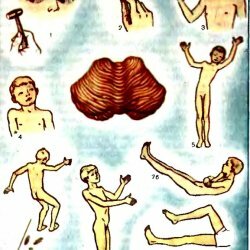Methods for diagnosing memory impairments

Memory is a mental function, as well as a kind of mental activity aimed at preserving, reproducing and accumulating the information received, as well as repeatedly using the information received to organize the activity.
Memory malfunction
There are several causes of memory problems:
- Stress.
- Diseases of the nervous system, such as meningitis, Alzheimer's disease, encephalitis, Parkinson's disease.
- Congenital and hereditary causes.
- Mental diseases, such depression, neurosis, schizophrenia.
- Head injuries.
- Addiction and alcoholism.
- Somatic diseases that result in impaired blood circulation in the brain due to damage to small or large vessels. For example, diabetes, thyroid pathology, atherosclerosis, hypertension.
Diagnostic methods
There are multiple diagnostic methods that are applied in both applied and general psychology.
Diagnostics of auditory and visual memory
This method is based on the study of visual memory and uses two series of picture cards( 30 pieces in each series) for its implementation, where various specific objects are depicted.
Procedure:
Take the first stack of cards and show them to patients at intervals of 2 seconds. After showing all the pictures, take a 10-second break and check what and how many pictures the patient has memorized. Pictures are allowed to be called in chaotic order. The results are recorded, and then the percentage of correct answers is calculated. The second pile of pictures is shown on another time under the same conditions.
If the diagnostic results are very different, while the external factor is excluded, then it is a question of the instability of the mnestic function and the poor concentration of attention.
The auditory memory is examined similarly, only in this case it is not shown, but is pronounced aloud in advance prepared series of words with an interval of 2 seconds. A series of words are shown on different days. The results are counted.
For adults, 100% of memory is considered an indicator with the correct indication of 18-20 pictures and 20-22 words.
Method of memorizing
1. Memorization of artificial words.
This means that the patient is provided with 10 sound combinations of disyllabic type that do not have a semantic load( for example, words of whitefish, rolls, wakar).The patient should repeat as many words as he remembered. Then the doctor repeats the words and suggests again to repeat them arbitrarily. If the person is healthy, he will repeat the words completely after 5-7 repetitions of these words by the doctor.
2. Memorization of words without a semantic relation.
Ten disyllabic words are taken, between which it is impossible to establish a semantic connection and read to the subject. He should repeat them completely after 2-4 repetitions by the doctor. After 20-30 minutes the patient is again offered to repeat a series of words. Correct and incorrect answers are recorded. As a result of this method, the doctor reveals the level of attention of the patient.
Study of associative memory
This method of memory diagnostics is performed as follows.
Prepare 10 pairs of words, between which you can easily establish a connection( eg, the river - the sea).Words are read to the patient first in pairs, separating them with pauses. Then only the first word is read, and the patient should repeat the second. A healthy person almost immediately gives the right answers. In an extreme case, after the second repetition. This method allows not only to diagnose the level of storage, but also the level of logical memory.
The method of indirect storage
20-30 figures are put on the table. The patient is read out 10-15 words and for their easy memorizing suggest to pick up to them a card with a picture, having established a connection between them and to argue their choice. This method to some extent allows us to talk not only about the logical thinking of the subject, his intellectual level, but also about the degree of adequacy. Because a weak-minded person is not able to perform such an assignment.
Memory is the active activity of the brain. Different parts of the brain are responsible for different memory. Memory failure indicates a failure in the brain, and memory diagnostics can reveal the area and extent of brain damage.



